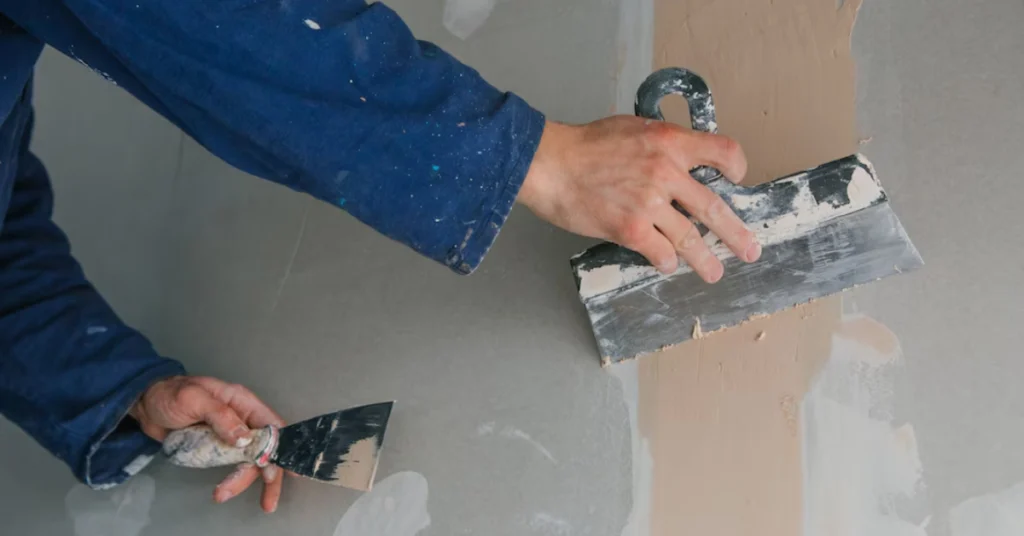Why Plastering is Essential for Building Maintenance

Plastering is the simplest aspect of building construction and maintenance. It not only provides a building with an exterior appearance, but it is also a weatherproof shield. Walls and ceilings and other sections of a building that are well-plastered have a longer lifespan. In residential, commercial, or industrial buildings, plastering provides structural support and rot protection in residential, commercial, or industrial buildings.
The Role of Plastering in Building Maintenance
Plastering is not all about aesthetics; it is compulsory for several purposes that contribute towards the overall building maintenance and longevity of a structure.
1. Weatherproofing
Buildings are exposed to harsh weather such as rain, wind, and temperature fluctuations on a permanent setup. Plastering is an outer layer which does not welcome moisture penetration and hence prevents damage due to possibilities of cracks, dampness, and structural loosening.
2. Increase in Strength and Strength
Plastering provides additional strength to walls and ceilings and thus durability in the face of wear and tear. A properly plastered surface is also resistant to cracking, which provides a stable and enduring structure.
Also Read: Basics of Plastering: All That You Ought to Know
3. Improvement in Appearance
Plastered wall provides a smooth and even surface, hence painting and finishing decorations can easily be attached to it. Plastering enhances the overall perception of a building, hence increasing its value and appeal.
4. Elimination of Pest Infestation
Sealing of cracks and crevices where rodents and termites can take shelter is done by plastering. By eliminating such possible points of entry, plastering makes it easier to achieve a cleaner and healthier environment.
5. Thermal and Acoustic Insulation
Plastering controls indoor temperatures because it serves as an insulator. Plastering also soundproofs, lessening the intensity of interior noise, which is used in both commercial and domestic properties.
6. Cost-Effective Maintenance Solution
Correct plastering minimizes repair and maintenance needs, hence saving one money. It extends the durability of ceilings and walls, keeping the cost of refurbishment low.
Types of Plastering Techniques for Building Maintenance
Plastering methods vary based on the building’s requirement and the climatic zone.
1. Cement Plastering
Cement plaster is a common construction material. It provides a hard, long-lasting finish that may be used for interior and exterior walls.
2. Lime Plastering
Lime plastering is ductile and porous. It is applied in green buildings and ancient buildings because it is a natural product.
3. Gypsum Plastering
Gypsum plaster is light weight and smooth finish. It is widely applied to ceilings and interior walls due to its fast-drying nature and light weight.
4. Stucco Plastering
Stucco is a showy form of plastering which is applied on the exterior side. It imparts an elegance to the texture and also improves weather resistance.
Role of Professional Plastering Services
Although plastering is simple, it has to be performed flawlessly by a professional. Professional plastering services assure:
- A careful surface preparation for complete adhesion.
- Use of superior quality materials suitable for the conditions.
- Implementation of the proper techniques to attain a permanent and even finish.
- Quality completion of the job without compromising on it.
Common Plastering Problems and How to Deal with Them
Even if properly done, things can go wrong in the future. Correct maintenance and prompt repair will prevent drastic consequences.
1. Cracks in plaster
They are created due to settlement, bad finishing, or intense weather. Cracks must be addressed in advance to prevent allowing room for any other type of damage.
2. Fungus growth and Dampness
Water leakage causes patches of mold growth and wetness. Proper water-resistance at the time of correct application of the plaster and the correct drainage system will prevent such damages.
3. Peeling or Flaking of Plaster
Excessive moisture or lack of bonding will make the plaster peel or flake. Re-decoration with good bond agents can renew the surface.
Conclusion
Plastering is a basic aspect of building maintenance, ensuring strength, safety, and elegance. Well-planned plastering ensures buildings become strong and well-looking for generations to come. In new buildings or redevelopers, investing in quality plastering services is imperative for long-term benefits.
For the quality of Premium Plastering Service, trust TRG Technical Service. From well-trained skilled workers to their uncompromising commitment to standards, TRG Technical Service provides quality plastering services as directed by your individual requirements.
Are You looking For Professional Plastering Services in Dubai? Contact us or call us at: +971 50 170 4507 to get a quote.


